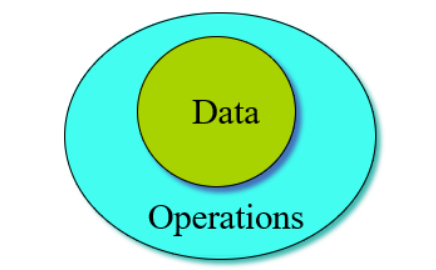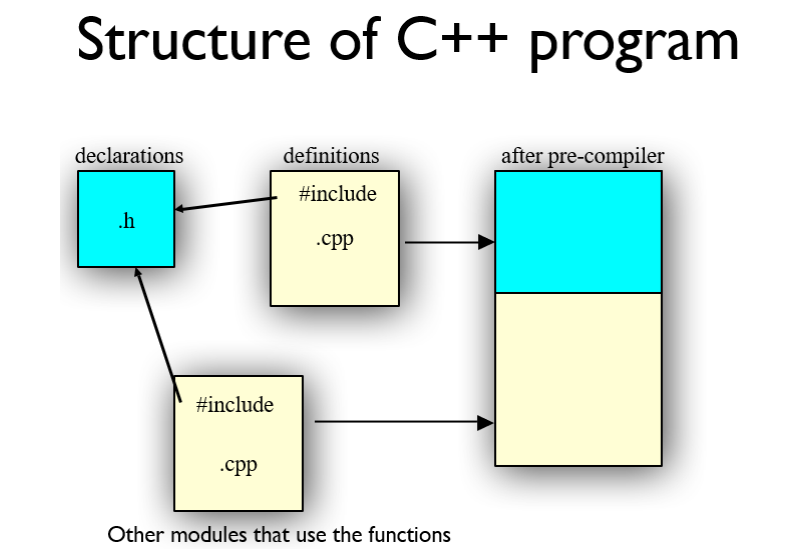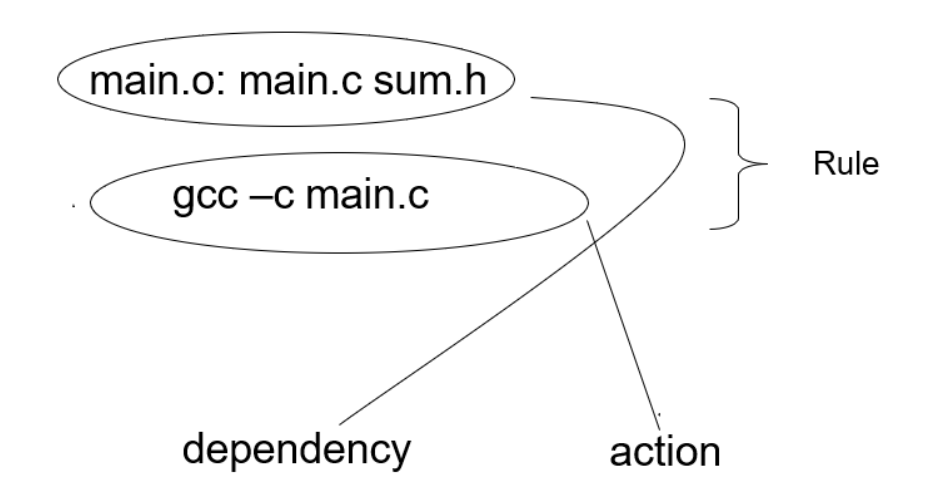第3章 class
3.1 C语言–面向过程
- 定义:定义结构体、对结构体的操作函数
- 使用:传入结构体指针、对应的参数
typedef struct point {
float x;
float y;
}Point;
void print(const Point *p){
printf("%f %f\n",p->x,p->y);
}
void move(Point* p,int dx,int dy){
p->x += dx; p->y += dy;
}
Point a;
a.x = 1;a.y = 2;
move(&a,2,2);
print(&a);
|
3.2 C++语言–面向对象
- 定义:将对象和操作绑定到一起
- 使用:操作Point对象
class Point{
public:
void init(int x,int y);
void move(int dx,int dy);
void print()const;
private:
int x;
int y;
}
void Point::init(int ix,int iy){
x = ix; y = iy;
}
void Point::move(int dx,int dy){
x += dx; y += dy;
}
void Point::print() const{
cout << x << ' ' << y << endl;
}
Point a;
a.init(1,2);
a.move(2,2);
a.print();
|
3.3 :: resolver
< Class Name >::< function name >
::< function name >
void S::f(){
::f();
::a++;
a--;
}
|
3.4 Container容器
container:是一个能够保存其它对象的object
stash:是一个可以存储变量、运行时可以扩展的container
要求:
- 无类型限制
- 存储的对象类型相同
- 操作:add()、fetch()
- 可以自动扩展内存
3.4.1 声明
#ifndef STASH2_H
#define STASH2_H
class Stash{
int size;
int quantity;
int next;
unsigned char* storage;
void inflatte(int increase);
public:
Stash(int size);
~Stash();
int add(void * element);
void* fetch();
int count();
};
#endif
|
3.4.2 定义
#include "Stash2.h"
#include "../require.h"
#include <iostream>
#include <cassert>
using namespace std;
const int increment = 100;
Stash::Stash(int sz) {
size = sz;
quantity = 0;
storage = 0;
next = 0;
}
int Stash::add(void* element) {
if(next >= quantity)
inflate(increment);
int startBytes = next * size;
unsigned char* e = (unsigned char*)element;
for(int i = 0; i < size; i++)
storage[startBytes + i] = e[i];
next++;
return (next - 1);
}
void* Stash::fetch(int index) {
require(0 <= index, "Stash::fetch (-)index");
if(index >= next) return 0;
return &(storage[index * size]);
}
int Stash::count() {
return next;
}
void Stash::inflate(int increase) {
require(increase > 0, "Stash::inflate zero or negative increase");
int newQuantity = quantity + increase;
int newBytes = newQuantity * size;
int oldBytes = quantity * size;
unsigned char* b = new unsigned char[newBytes];
for(int i = 0; i < oldBytes; i++)
b[i] = storage[i];
delete[] (storage);
storage = b;
quantity = newQuantity;
}
Stash::~Stash() {
if(storage != 0) {
cout << "freeing storage" << endl;
delete[] storage;
}
}
|
3.5 this
this:指向对象本身的指针,是类的每个成员函数的隐藏参数
void Stash::initialize(int sz);
void Stash::initialize(Stash* this, int sz);
Stash a;
a.initialize(10);
Stash::initialize(&a, 10);
|
class MyClass{
int x;
int y;
public:
MyClass(){x = 0; y = 0;}
void foo(int x, int y){
this->x = x;
this->y = y;
}
};
|
3.6 Object & class
Objects = Attributes + Services
- data:对象的特性or状态;operations:对对象的操作
- 通过接口修改数据,而非直接修改数据
- 直接访问变量,变量的声明者对变量没有控制权,无法控制操作者的行为

class定义object,object是class的一个实例
- class表述对象可能具有哪些特性
- object表示当前对象的每个特性的具体取值
OOP的特性:
- 所有事物均可以看作一个对象object
- 程序是对象的集合,他们通过互相发送消息,告知应该做些什么
- 每个对象都有自己独有的内存空间,由其他更加通用的对象组成
- 每个对象都有一个类型type
- 一个特定类型的所有对象,可以收到相同的信息
3.7 Definition of a class
- class的声明放入.h文件
- class的函数体、静态成员变量放入*.cpp文件
3.8 compile unit
- compiler只会看到当前的cpp文件,生成当前文件对应的
obj文件
- linker会链接所有的obj文件,生成一个
exe文件
- 如果要使用其它cpp文件中定义的函数/类,需要使用
.h头文件进行声明
- 如果函数定义在头文件,那么必须在任何使用该函数和定义该函数的地方include该头文件
- 如果class定义在头文件,那么必须在任何使用class和定义class的地方include该头文件
- 当使用
#include引用头文件时,编译器会将头文件的内容展开到当前文件,相当于将函数/类的声明写入了当前cpp文件中

3.10 Makefile
- 当程序的代码量过大时,如果仅使用单个文件,会导致诸如难以管理、单次修改需要编译整个项目等问题
- 因此我们需要将代码拆分为多个文件进行管理与修改
- 多个代码文件之间的关系,通过Makefile文件声明
3.10.1 Project的结构
可以看作是一个有向无环图DAG
以一个工程为例
- 包含main.c、sum.c、sum.h
- sum.h在所有.c文件中都包含

此时的makefile为:
sum: main.o sum.o
gcc –o sum main.o sum.o
main.o: main.c sum.h
gcc –c main.c
sum.o: sum.c sum.h
gcc –c sum.c
|
3.10.2 makefile的语法规则:

简化语法:
sum: main.o sum.o
gcc –o $@ main.o sum.o
main.o sum.o: sum.h
gcc –c $*.c
|
3.10.3 makefile的过程
- 构建项目依赖树
- 创建第一条指令的目标,当且仅当一下两种情况成立之时:
- 目标文件不存在
- 目标文件比它的一个依赖项更早生成
- makefile的作用是保证最小的编译数量,因此需要正确写明
- 不要写成下面这样(这样写会直接重新编译所有文件)
prog: main.c sum1.c sum2.c
gcc –o prog main.c sum1.c sum2.c
|
3.11 CMake
- 是一个跨平台的,开源编译系统
- 可以看作是Makefile的升级版



